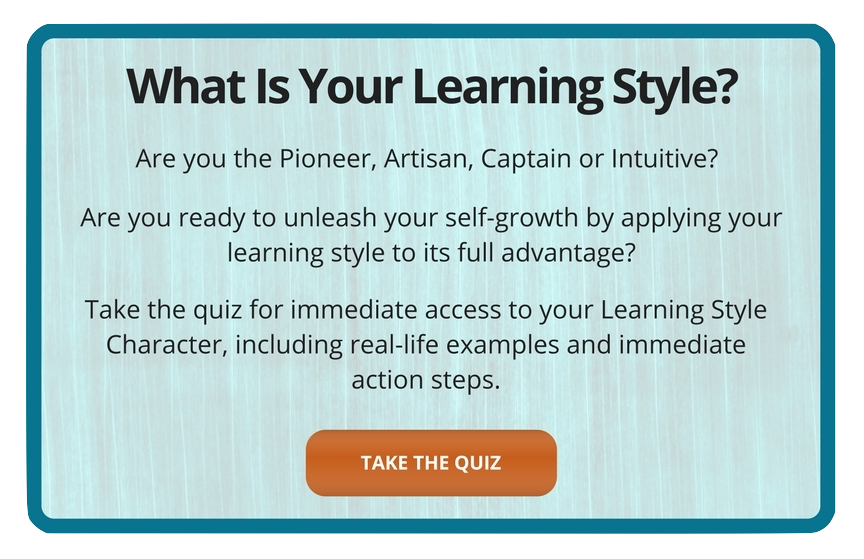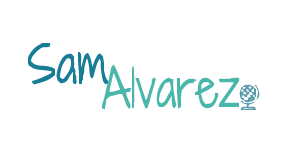10 easy ways to learn a language in less than 10 min per day

Have you noticed how the gym is noticeably emptier compared to January?
Yeah, it happens. People get excited at the beginning of the year and start going to the gym five days a week. But come February, they start dropping off the radar. Soon, one missed day becomes two, which becomes a week, and before they know it the whole year has gone by.
Now, I’m not judging. I’ve been guilty of it too, in the past.
But I don’t want your goal to learn a new language become relegated to another unfulfilled new year resolution.
Excitement is always a good point for starting, but it’s not sustainable. Trying to do too much too early will leave you feeling overwhelmed and you’ll give up. That’s why I’m here to help you make sure you’re miles ahead in your language learning journey by the time the year comes to an end.
Slow and steady wins the race (and helps you learn languages too)
Learning a language takes time. You’ve got to commit to it for at least three months before you become fluent, and often longer. That is why it’s much better to learn it at a pace that you can sustain.
In other words, it’s a marathon, not a sprint.
Believe me, I totally understand how easy it is to get excited and sign up for a bunch of different courses and download multiple apps. But that only leads to spending the next several days trying to make sense of all the madness, and giving up when you can’t figure it out.
The question you’ve got to ask yourself is, “Do I want to have tried different methods of learning a language or do I want to have learned a language by the end of the year?”
If you want to learn and speak a language, my advice is to commit a small amount time to learning the language of your choice and do it daily. Slow, consistent progress will stack up over time and before you realize it, you’ll be much further along than you thought possible.
If you haven’t started learning a language yet, I suggest you start here and get clear on why you’re learning it in the first place.
But if you have fallen off the language learning bandwagon, here are 10 easy ways to get back on track, in less than 10 min per day.
#1 Set a daily language learning goal
Out of all the to-dos on your list, you’re most likely to neglect the ones that aren’t urgent. So unless you’re learning a language for career related or academic purposes, it’s going to keep getting pushed down the priority list.
That’s why it is important to set a daily goal that is both realistic and easy enough that you don’t look at it and go, “Oh, I don’t have time for it right now.”
A simple way to do this is to pick the method of your choice and commit to doing 5-10 min of it daily. That’s it!
If you don’t like tracking time, you could commit to learning 5 new words, read 5 sentences, or listen to 5 min of audio. The key here is that you set a clear end point for your daily goal. Once you hit your daily goal, you’re done for the day.
#2 Schedule your language learning for the same time every day
One of the best ways to build a new habit is to tie it in with your existing habits. Think about the small things that you do daily without even thinking about it – brushing your teeth, taking a shower, making coffee, eating breakfast, lunch etc. If you tie in the 5-10 min of your daily language learning to any of these activities, you will be much more likely to do it.
For example, you could take 5 min as soon as you wake up, between brushing your teeth and showering, to learn a language. Personally, I wake up and spend the first few minutes in bed reviewing a language. Then I spend another few minutes on it just before I go to bed.
It might take some time before you get used to it, but when you do, you will be learning without any extra effort.
Make language learning a part of your daily routine and you’ll retain far more than if you took weekly lessons.
#3 Stick to learning only one language at a time

I speak from experience! I’ve been guilty of having my finger in too many pies at the same time. It only ends in frustration and stunted progress.
Choose your first language carefully as you will be sticking with it for a few months at least. Make sure that you are genuinely interested in learning it and only then dedicate time for it daily.
I’m not saying you can’t learn multiple languages at the same time. But be wary of the fact that you won’t be getting fluent at any of them anytime soon.
Learning only one language at a time is the fastest way to make progress in it. No one is stopping you from adding more languages to your repertoire after you’re done working on your current one.
#4 Take advantage of commutes and grocery store lines
How many times in the day, do you end up defaulting to checking Facebook or watching random videos on YouTube?
Waiting in line at a grocery store or coffee shop or commuting to work on the subway. Whenever there are a few minutes of downtime, you instinctively reach for your smartphone. I’m sure, even you’ll agree that it’s not a very useful or productive thing to do.
But what if you could use this seemingly unproductive habit to your advantage to help you learn a language?
The next time you pull out your smartphone to pass a few minutes while waiting or commuting, try listening to audio lessons or podcasts or learning a few new words. The trick to doing this is to download the lessons or apps beforehand so it’s available when you need it.
Consistent progress in small doses will help you learn a language faster than intense study only a few times per week.
#5 Use Anki (a flashcard app) on your phone
This is one my favorite way of keeping up my language learning progress, no matter how busy I am. Anki uses a spaced repetition pattern to help enhance your vocabulary in the language of your choice. It has an iOS and Android app, so you can use it on your phone too.

I use Anki as part of my morning ritual. The first 15-20 min after waking up, when my brain is not yet fully functional, I review Anki cards on my phone while lying in bed. It’s a good way to transition between sleep and fully awake state.
The Anki app also comes in handy when you want to take a short break from work. You can spend 5 min standing up or walking, while simultaneously reviewing 10 words of the language you’ve chosen.
The best part about Anki is that you get to design your own learning style, whether it’s revising vocabulary, studying pictographs, or memorizing common phrases.
#6 Make language learning fun by gamifying it
Speaking multiple languages is cool and fun. Learning them should be no less fun. But often, the rigidly structured academic system takes all the fun out of learning. That’s where gamification comes to the rescue.
Gamification has been implemented across diverse fields to help people feel engaged and have fun while learning. It takes the basic ideas that make video games addictive and applies them to activities that were conventionally not fun. Including, learning languages.

If you want to try out a fun way to learn languages, give Duolingo a shot. It’s a language learning app that awards you points for completing lessons (which you can use to buy cool upgrades), shows you what level you’re at in the language you’re learning, and even tells you how fluent you are in the language.
When I’m not in the mood for intensive study, I use Duolingo to stay in touch with the language I’m learning. It’s fun, takes less than 10 min, and I can do it from anywhere.
#7 Becoming self motivated by tracking your time investment
All big goals require you to invest a significant amount of your time before you start seeing solid results. But there’s also the risk of giving up midway, when it feels like progress has slowed to a tedious crawl.
Learning a language also requires an investment of time before you can get fluent, or even conversational in it. However, almost everyone hits a bump at some point [link to future post???]. It’s easy to lose motivation when that happens, and eventually leads to giving up.
That is why it’s important to build momentum. Seeing how far you’ve come makes you more likely to keep going.
Measuring progress is how fitness wearables help you lose weight. Devices like Fitbit track how many steps you’ve walked at the end of each day. Showing you the progress you’ve made toward getting fitter makes you eager to do better the next day. And the virtuous cycle keeps repeating.
Similarly, try keeping a track of how much time you’ve invested in learning a language. Every minute added counts as progress, even if it feels like you’re hardly learning anything.
#8 Leverage language learning to get rid of bad habits
Ever caught yourself browsing social media or watching useless videos for, umm, hours [guilty!!], and wondering where all the time went?
It happens, right?
Maybe not everyday, but now and then we all end up doing things that aren’t beneficial. They might feel good in the short term, but have negative effects over time.
I used to hop onto social media during my “breaks” from work. I thought it was a good way to unwind after a couple of pomodoro sessions [link to pomodoro post]. But I didn’t realize how adversely it was affecting my focus until I stopped doing it.
Now, I’ve switched to watching language learning videos, or listening to music in the language I’m learning. It helps me feel just as relaxed when I return to work, and helps me make progress in my language learning goals. And if you’re clear about your “why” for learning the language, it doesn’t take a herculean effort to make this switch either.
So the next time you catch yourself wasting time on social media, pick up your smartphone. Instead of relapsing and continuing with the bad habit, spend 5-10 min learning a language. It will shift your brain into a positive state of mind and help you get back on track.
Instead of feeling bad and criticizing yourself, you can leverage language learning as a positive method to give up bad habits and switch to good ones.
#9 Have fun by mixing it up
If you truly want to learn a language and are sure of your reason, don’t fall into the trap of making it boring and routine. I mean, no one would disagree that flossing is good for you.
But it isn’t anyone’s idea of fun, is it?
Like Lindsay says on her blog Lindsay Does Languages, “If you don’t want to do something, don’t force it. The worst thing that can become attached to language learning is a negative feeling of boredom, frustration, or annoyance. Boo.”
Exactly my point. Say “boo” to anything that doesn’t capture your interest and makes language learning a boring activity. Be creative about it and you will never run out of options:
- If you prefer audio, try listening to songs in that language
- If you prefer video, watch funny videos in that language
- If you like written text, pick up a book you’re familiar with, which has been translated to that language
- Try a fun activity with your friends or family (like cooking a French recipe) and show off your language skills
Speaking multiple languages is fun, but getting there can take some time. Make sure boredom is not the reason you quit learning. Mix it up when you start to feel it’s getting boring. Have fun, that’s the best way to learn a language.
#10 Try audio journalling in the language you’re learning
I do this personally and find it to be extremely effective. I keep an audio journal and every night, before I go to bed, I record myself speaking about my day. In the language I happen to be learning at that time.

While I was learning French, I found it difficult to schedule any italki sessions for almost 6 weeks. So I started talking to myself in French to practice speaking. I didn’t think I was making much progress, but as soon as I got back to the sessions I realized my French speaking level had gone through the roof. I sound fluent even though I don’t know many common words like “almost” or “just.” I single-handedly credit this progress to my audio journal.
If you already keep a written journal or diary, then the audio journal becomes even easier to do. Just translate what you’ve already written down and record yourself speaking. Try it out; it will accelerate your progress like nothing else.
The best way to become fluent in a language
When learning a new language, the worst thing you can do is fall out of touch with it. That’s why the best way to get to fluency is to practice it for 5-10 min every day. Even if you don’t feel like you’re making progress, it will keep the language skills active in your brain. Trust me, it will lead to surprising leaps in your language learning ability in just a few weeks.
Everyone is born without any language skill and they develop it as they grow. It truly is a learned skill. You are just as capable of speaking a new language as a native speaker, or a polyglot. The only thing stopping you is the time and effort you’ll have to put into it. So keep making consistent daily progress and you too will be able to rattle off phrases and have conversations like a native speaker.
Even though everyone can learn languages, your learning style can influence how fast you progress. For example, if you learn the best practicing with another person, text-based learning won’t get you far; if you’re primarily an auditory learner, video lessons may slow your progress.
That is why identifying your personal language learning style can help you get to fluency faster. If you’d like to find out your language learning style, check out the quiz I’ve created for you. It’s fun, and free, and will give you insights to help you learn languages faster. Check it out at the link below:
